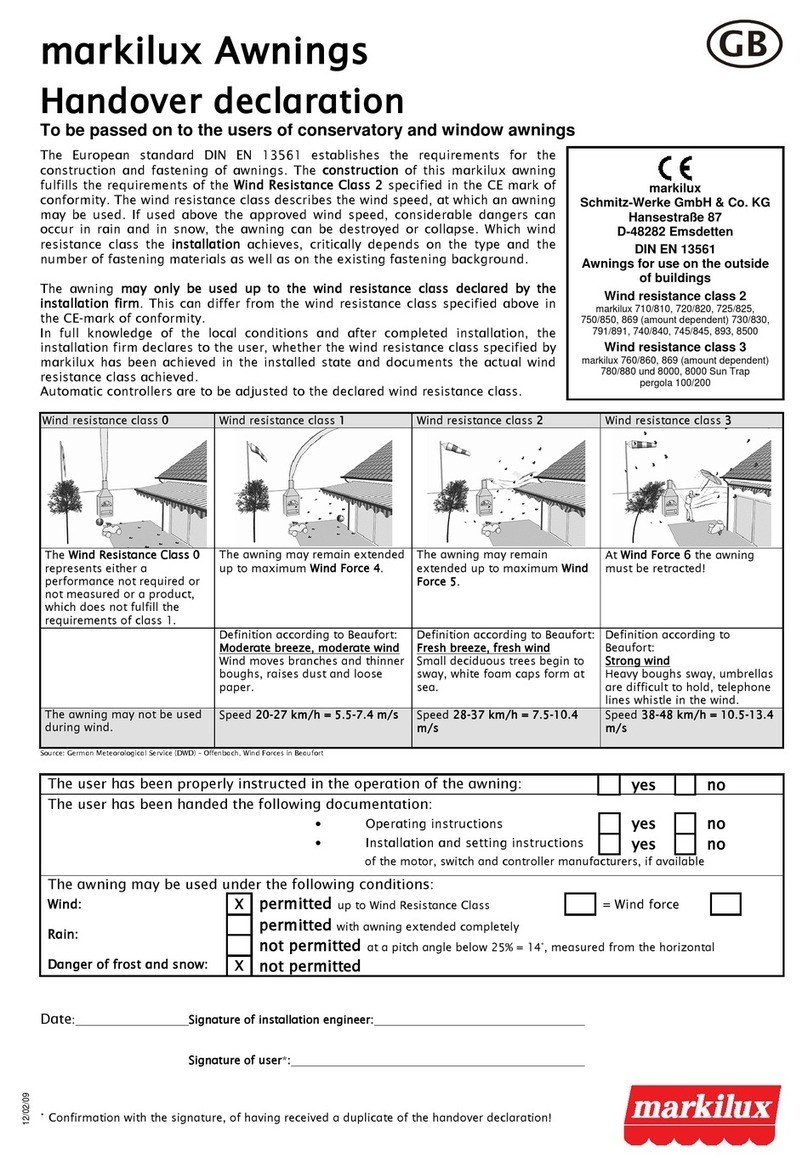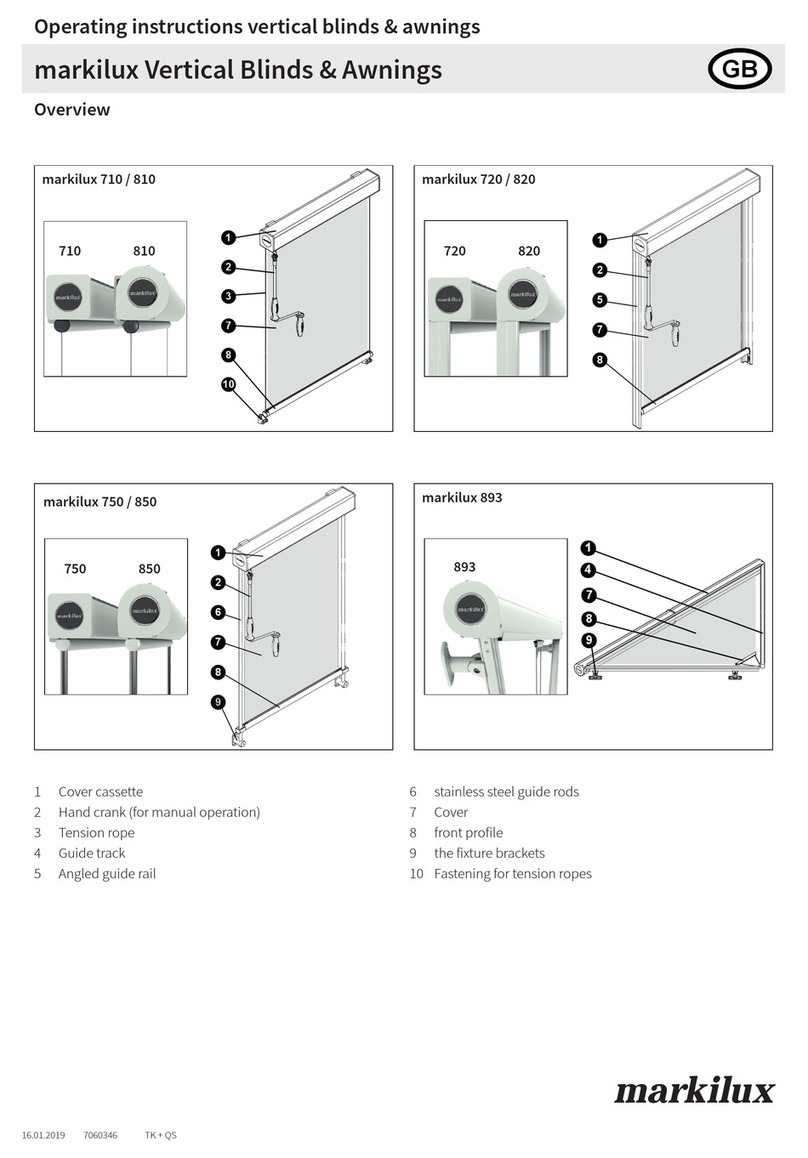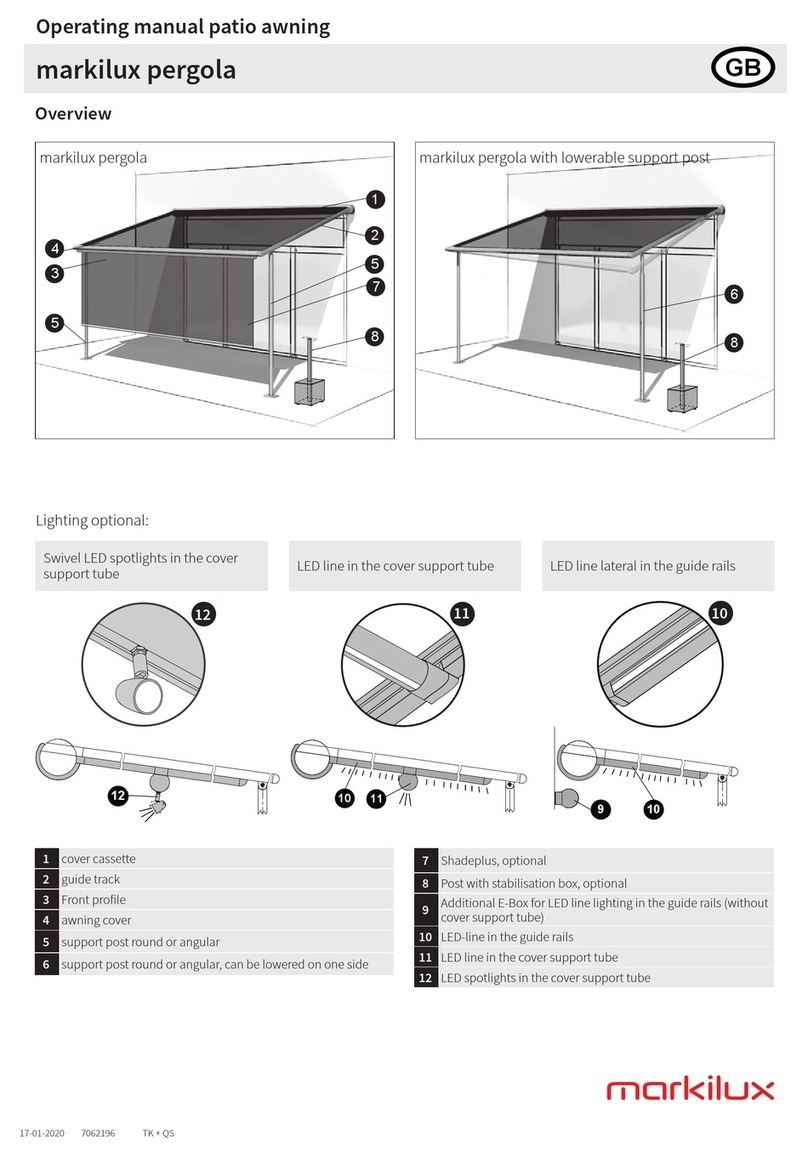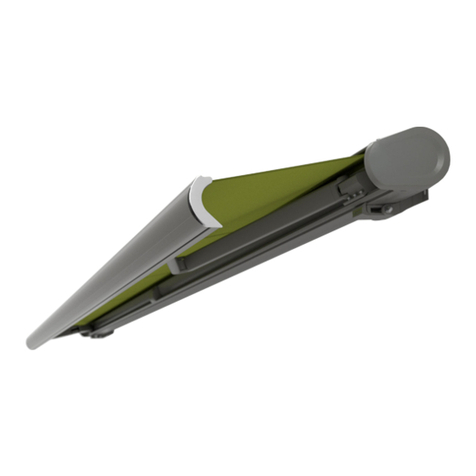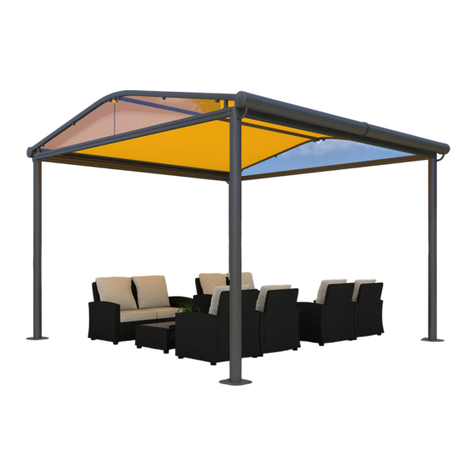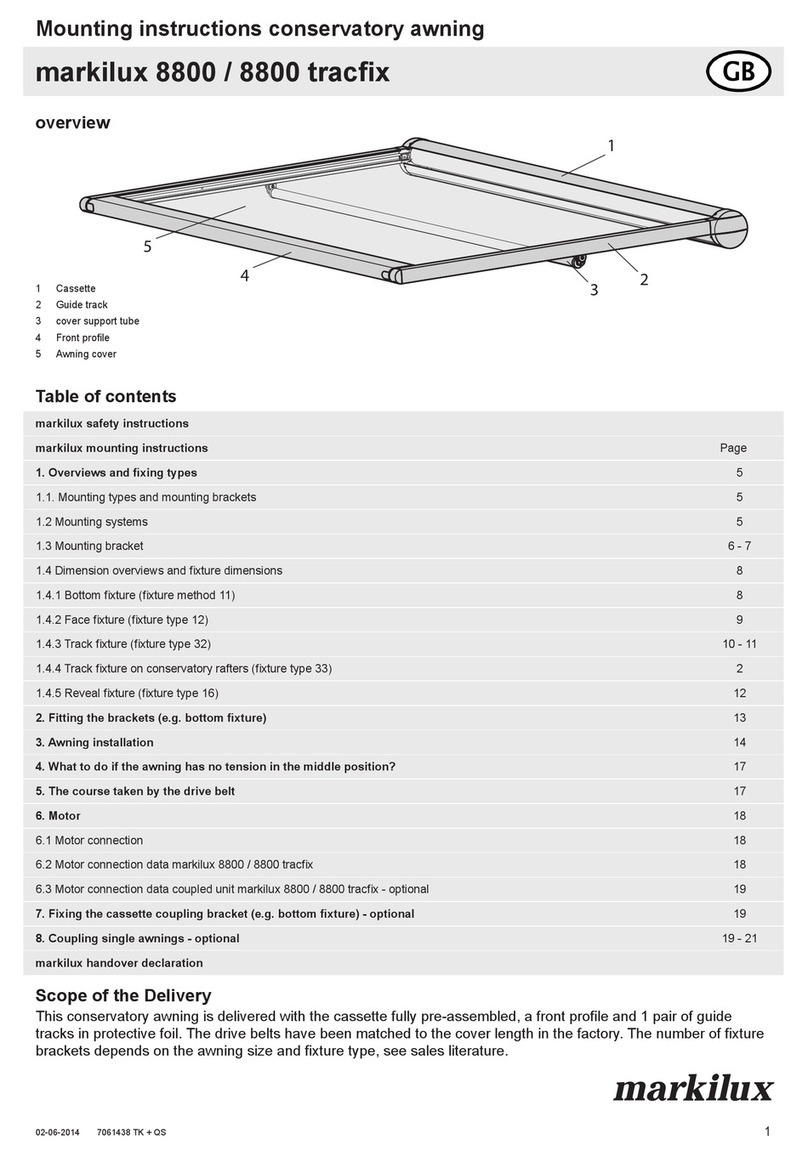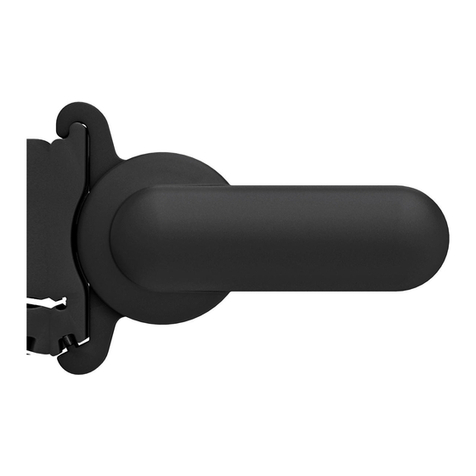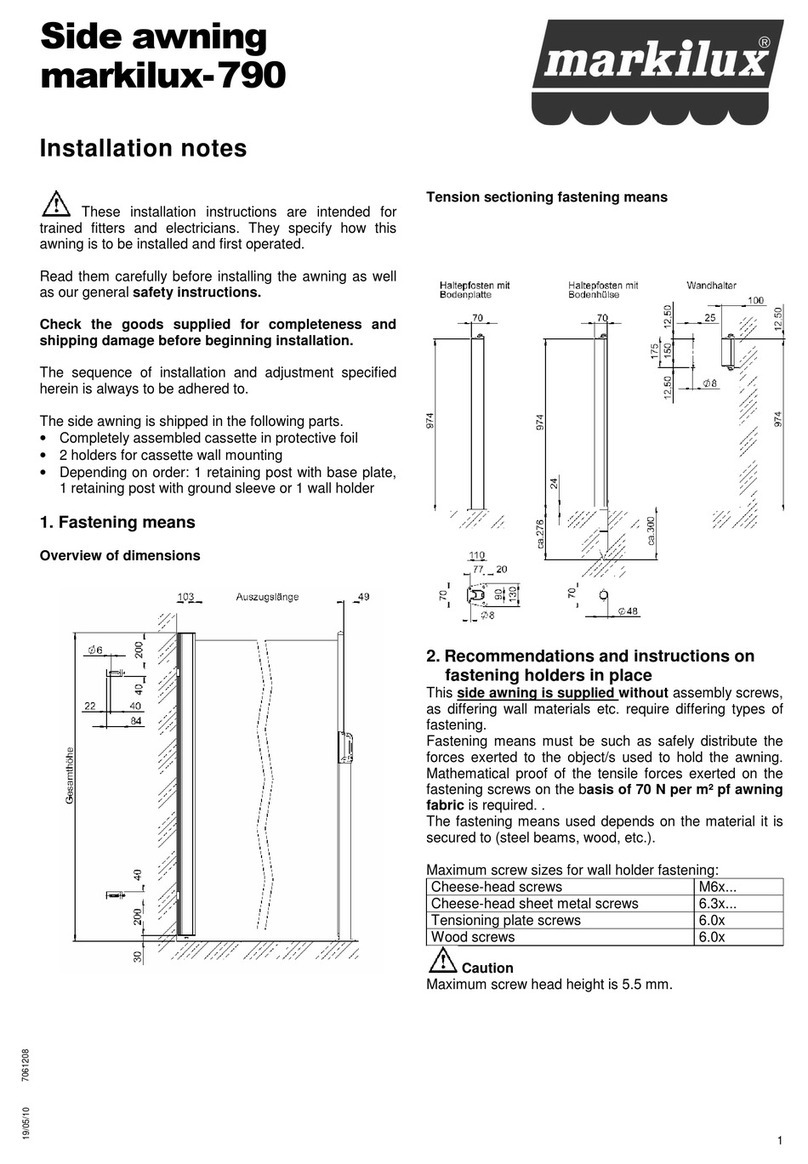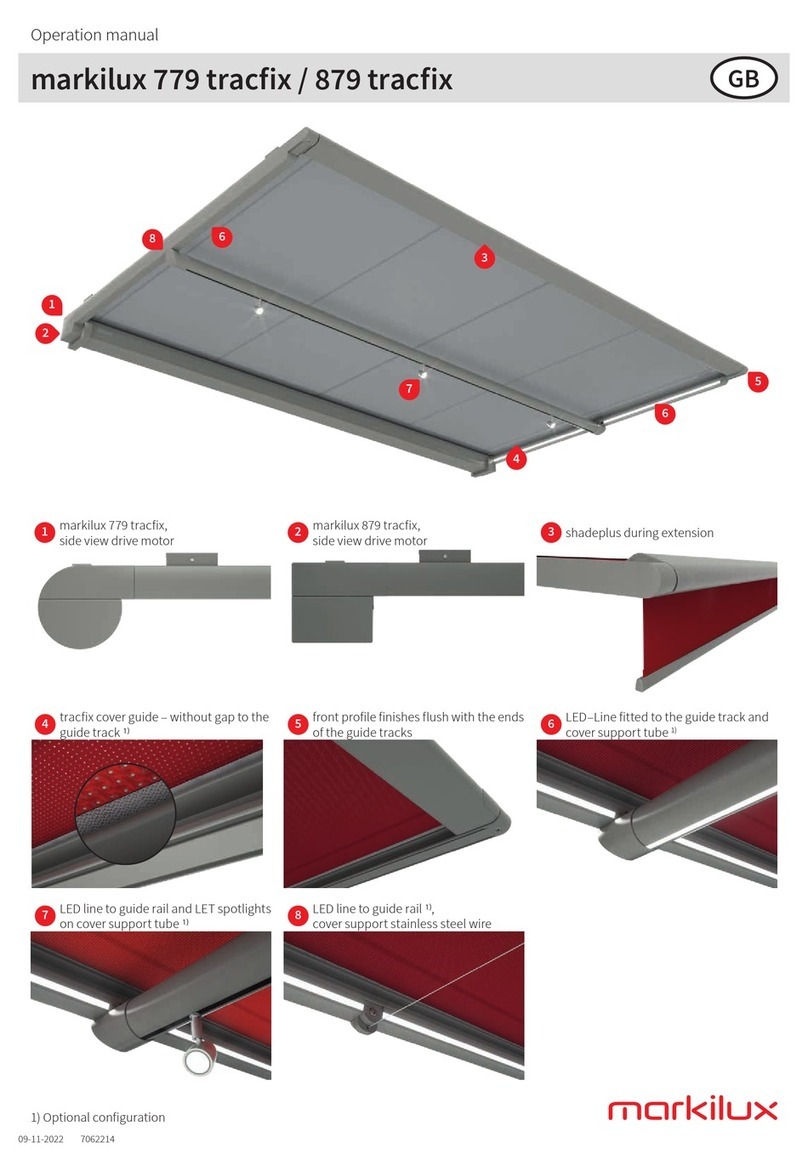3
tional drillings have to be made laterally in the
rails.
There are grooves in the rails to make it easier for
the customer to make drillings in the same dis-
tances as the drillings already in place.
Mounting drillings in the angled guide rails for the
max. screw size for niche mounting drive and/or
motor:
Attention: It has to be observed for the niche
mount hat only countersunk-head screws that do
not protrude are used, as the the downpipe is
guided in he groove.
3. Motor connection
The lead-in for the motor and the control connec-
tion has to be installed and connected by an ap-
proved electrician (as per VDE 0100). The connec-
tion has to be executed acc. to the regulations of
the manufacturer of the motor/controller.
Modifications, especially concerning the motor, the
controller and the connecting supply lines require
our authorization.
Cable exit on motor driven units
Attention:
3.1 For the unmonitored operation of the electro-
motive powered mini-awning with automatic
control the following has to be observed:
If the mounting height of moveable parts of the
window awning to the circulation are is less
than 2.5 m, special safety measures have to be
taken in order to prevent possible injuries
(mech. shielding, overload protection, contact
strip, photocell, etc).
No persons and obstacles should be within the
extension and retraction range of the awning!
Special care has to be taken for accessible areas
in which children could be.
3.2 For the operation of a electromotive powered
mini-awning with manual switch the extension
and retraction motion has to be stoppable and
permanently controllable by the user, if the
awning is in an accessible area and the safety
distance of 2.5 m, described under point "3.1"
cannot be adhered to. In this case switch push
buttons have to be used permitting by simply
omitting the operation button thus enabling a
stop of the extension and retraction motion
(principle of dead man's switch).
3.3 The automatic operation of the awning must
not lead to falls of persons possibly working at
the facade. An overriding switching locking de-
vice or blocking barrier has to make impossible
any adjustment of the awning if there are works
taking place at the building facade.
Setting the motor end switch:
Attention: The built-in motor has a set end
stop both in the extension and retraction direction.
These settings were effected in the factory. They
always have to be checked on site, as the end stops
might have shifted e.g. through strong vibrations
during transport or the motor does not switch off
anymore. For any changes or corrections of these
settings please refer to the instructions of the
motor.
The installation and setting instructions are indi-
cated on the motor's power supply cable. When
setting remote-controlled motors please start with
point "factory"-programming of the instruction
manual!
Attention: The rolling up of the fabric on the
fabric roller from top during retraction could result
in damage to the awning fabric and the awning
frame. When setting the end positions of the motor
it is important to ensure that the fabric winds up as
shown during the retraction process:
